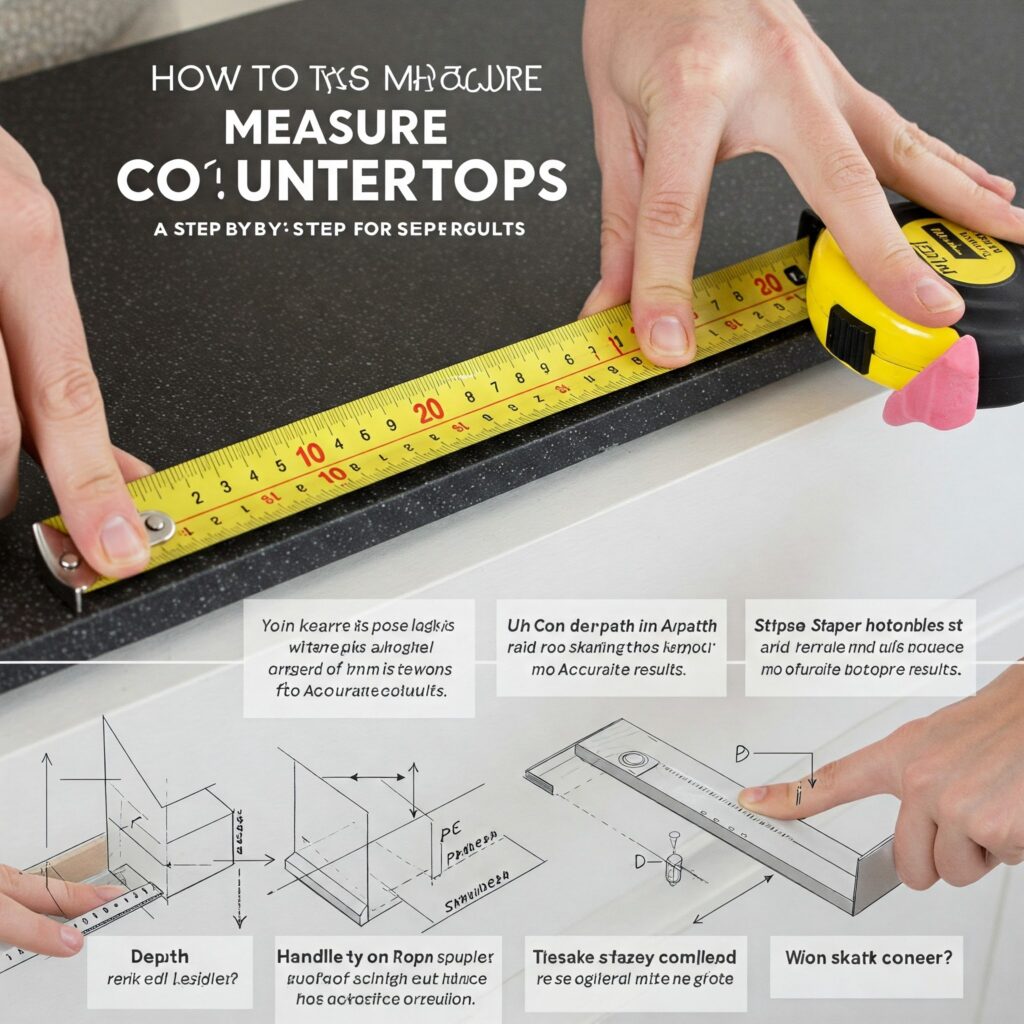Introduction
Accurate measurements are crucial when planning to install new countertops. Whether you’re upgrading your kitchen or replacing existing surfaces, precise dimensions ensure a seamless fit and help in obtaining an accurate quote. This guide provides a comprehensive approach to measuring your countertops effectively.
Essential Tools for Measuring Countertops
Before starting, gather the following tools:
- Measuring tape
- Pen or pencil
- Paper or graph paper
- Calculator
- Straight edge or ruler
- Optional: digital measuring tool or laser measure for enhanced accuracy.
Preparing the Area
Clear the countertops of any items to ensure unobstructed measurements. Identify all sections of the countertop, including islands, peninsulas, and areas around appliances. Note any backsplashes, overhangs, or unique features that may affect measurements.
Creating a Sketch of Your Kitchen Layout
Draw a top-down view of your kitchen, marking all countertop sections. Include.
- Sink and cooktop locations
- Appliances adjacent to countertops
- Backsplash areas
- Edges that require finishing
Label each section for easy reference when recording measurements.
Measuring Countertop Dimensions
For each section.
- Length: Measure from one end to the other along the back edge.
- Depth: Measure from the back wall to the front edge.
Standard countertop depth is typically 25.5 inches, accounting for a standard overhang. For areas with overhangs or unique features, measure accordingly. Record all measurements in inches.
Accounting for Cutouts and Overhangs
Identify and measure any cutouts for sinks, cooktops, or other appliances:
- Width and depth: Measure the size of each cutout.
- Position: Measure the distance from the nearest edges to the cutout.
For overhangs.
- Standard overhang: Typically 1 to 1.5 inches beyond the cabinet edge.
- Seating areas: May require larger overhangs; ensure proper support is planned.
Calculating Square Footage
To determine the area of each section:
- Calculate square inches: Multiply length by depth.
- Convert to square feet: Divide the result by 144.
Example: A section measuring 96 inches in length and 25.5 inches in depth:
- 96 x 25.5 = 2,448 square inches
- 2,448 ÷ 144 = 17 square feet
Repeat for each section and sum the totals to obtain the overall square footage.
Finalizing Measurements and Seeking a Quote
Double-check all measurements for accuracy. Use your sketch and calculations to communicate with countertop suppliers or fabricators. Providing detailed measurements and layouts helps in obtaining precise quotes and ensures a smoother installation process.
Conclusion
Measuring your countertops accurately is a vital step in the renovation or installation process. By following this guide, you can ensure that your new countertops fit perfectly, enhancing the functionality and aesthetics of your kitchen. If you encounter complex layouts or prefer professional assistance, consider consulting with experts to achieve the best results

